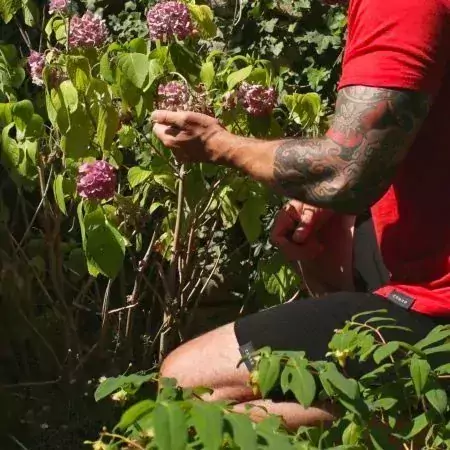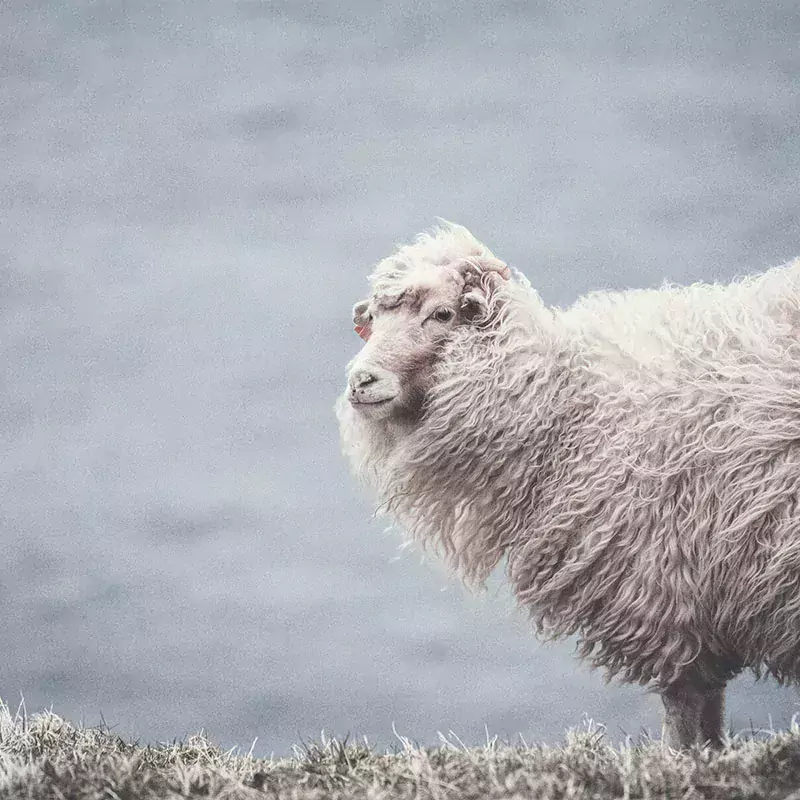
Tajikistan: an adventure on two wheels With this blog article we take you to an exotic place, in the most continental Asia: Tajikistan. The protagonists of this story are Fabio and Mirco, two friends – and friends of CAMCO – who in September flew from Milan Malpensa to Istanbul and, after a stopover of around 3 hours, left for Dushanbe, the capital of Tajikistan. With them they had their two bicycles, a tent, and everything that could make them as independent as possible with minimal space. Dushanbe was not their final destination. Here, in fact, they took a collective taxi and, with a journey of approximately 12 hours, they arrived in Rŭshan, approximately 500km away, to the east. Rushan is a small town of around 6,500 souls, at 2,000 meters above sea level, on the border with Afghanistan. The protagonists of this story are Fabio and Mirco, two friends – and friends of CAMCO – who in September flew from Milan Malpensa to Istanbul and, after a stopover of around 3 hours, left for Dushanbe, the capital of Tajikistan. With them they had their two bicycles, a tent, and everything that could make them as independent as possible with minimal space. Dushanbe was not their final destination. Here, in fact, they took a collective taxi and, with a journey of approximately 12 hours, they arrived in Rŭshan, approximately 500km away, to the east. Rushan is a small town of around 6,500 souls, at 2,000 meters above sea level, on the border with Afghanistan. In addition to this, Mirco tells us some curiosities, sensations and experiences: The people are “extremely hospitable” and he doesn’t remember how many people offered him tea every day, on the street or at home.In the first half of the journey the overnight stay was in guesthouses or in tents, but from then on, not finding any more accommodation, they understood that it was sufficient to ask the people they met in a village to be welcome guests in their home, or to grant them the garden to be able to place the tent. The same goes for food: when you asked where you could have dinner or breakfast, local products were offered and prepared (especially milk, eggs, fruit and vegetables), for which Mirco and Fabio always felt like leaving an offering. , since no one has ever asked them for money in exchange for this hospitality.On the other hand, in the few shops in the larger villages the food offering left a lot to be desired – mostly snacks and industrial foods, often out of date. A recurring curiosity when we hear the stories of those who have traveled in exotic places refers to possible encounters with wild animals: in this case Mirco says he met camels for the first time in his life, free to roam the plateaus, in the state wild. P.S. For the record, they have never had any problems of any kind, apart from a few punctures… but it is physiological to have this type of inconvenience when you clock up so many kilometres, especially on unpaved roads. An inconvenience foreseen and welcomed with serenity. Finally, a curiosity of our own on how the Bulètt and Bisbìn T-Shirts from CAMCO behaved, which both Fabio and Mirco have known since well before this adventure, but which with this adventure were tested in situations far removed from everyday life, even that of those who have an active life. They had already long appreciated the qualities relating to thermal comfort, the ability to prevent odors from developing even during intense and prolonged use, the exceptional management of body humidity, and had thus decided to add them to their baggage, in compliance with the approach “few functional items”. In conclusion they can add that not having had the possibility to wash the clothes every day was not a problem for the t-shirts, as they were not burdened with odors and humidity, and indeed: they often chose not to wash them even though they had the possibility because if they found themselves as fresh as at the beginning of the stage. …and, on the few occasions when they wanted to wash them, they were happy with an additional quality of the merino wool + TENCEL™ fabric: the extraordinary speed of drying! Below are many photos of this cycling trip along the mountain roads of Tajikistan. Many… but still only a small part of all those that Mirco and Fabio showed us. It was hard to select them. We wanted to stick to around ten photographs, but there were too many that just couldn’t be excluded. Good vision! The first section, which runs alongside Afghanistan and the Wakhan Corridor Self-sufficient, always! Mirco and Afghanistan beyond the river Afghanistan beyond the river Lunch with some truckers at a hot water spring The first afghan “6.000s” in the background Tajik flags Tents dismantled, ready to start the day Fabio and the afghan 6.000s in the background Wakhan Corridor, Alichur Pamir, Murghab, Ak-Baital Wakan Corridor Fabio, Mirco, and Afghanistan seen from the Wakan Corridor Typical Pamir house Lake before Alichur The Pamir Highway, more than 4.000 m above sea level Murghab The Ak-Baital pass Descent from Ak-Baital towards Bartang Valley Bartang Valley Bartang Valley Bartang Valley Bartang Valley Fabio and the yurt of some shepherds Bartang river Different levels of sustainability A red Bulètt enjoys the view Fabio waiting in a restaurant along the Pamir Highway Some of our favorite photographs, randomly ordered Back to all articles

The water consumption of our closet The prolonged period of drought we are experiencing in Lombardy brings to mind some considerations that determined the choice of the materials we use. Here in Como our lake has reached the level below which navigation enters into crisis, the maintenance of walls and docks is at risk and even flora and fauna find themselves having to face a difficult situation for their survival. It is an extreme situation since the climate of these months is extreme, with prolonged drought and temperatures that are expected to reach over 40°C as of today, when values above the average for the respective periods have already been recorded for many weeks. We speak from our direct experience here, in Lombardy, but the problem heavily affects the whole of northern Italy and many other Italian and European regions. In practically all the Municipalities of the Province, ordinances have been issued which aim to limit the use of water resources, prohibiting actions such as watering gardens. It is easy to understand who those are who think they can consider themselves an exception to this prescription by seeing the luxuriance of some private gardens in recent weeks. Where civic sense and respect for ordinances – in addition to common sense – have fertile ground, in the gardens you can see sunburnt grass and plants with falling leaves and dried flowers, even for plants exposed only a few hours a day to direct sunlight. sun, as happens with this hydrangea pictured above, in our little garden – the St. John’s Wort and the ivy aren’t doing badly, fortunately. What this period should teach us is that climate change is a factual reality that is now difficult to deny even by the most convinced deniers, and that water, a source of life, is not a resource that we can take for granted – as we are used to think of us lucky citizens of 21st century Europe. It is not the intention of the writer to provide a list of virtuous behaviors to follow to avoid waste and excessive consumption, also and above all because those who follow CAMCO are certainly people sensitive to these issues and there would be very little to teach. The unfortunate opportunity of this emergency situation is taken here only to share the reasoning that was made at the time, when it came to thinking about which fiber to combine with our beloved extrafine, organic and mulesing-free merino wool, so that the resulting fabric was more resistant to loss of shape in the garments in which it would be used, compared to the case of a wool-only fabric. Bamboo, linen, hemp would have been other alternatives, but for the combination with a fiber classified as “extrafine”, TENCEL™ seemed more suitable, sharing many qualities with merino wool such as softness, breathability, thermoregulation, effective moisture management body, inhibition of the development of bacteria and odors, etc etc…In addition to this aspect, TENCEL™ has also proven to be the preferable fiber for aspects related to sustainability, including considerations relating to water needs. If the idea of telling the story of this choice is something inspired by the climate of these days, it is precisely because TENCEL™ was a choice also dictated by the sustainability of the production of this fibre. (Sustainability which is also expressed by the very nature of the fibre, which is certified biodegradable and compostable). TENCEL™ is the name Lenzing AG gave to its lyocell, which is the generic fiber. Lyocell is obtained from wood pulp and the choice of the fiber produced by the Austrian company Lenzing AG among the various producers has its motivation in the choice of the wood used and in the sustainability of the production process – at levels so high as to be was awarded by the European Commission (European Award for the Environment, category: Technology Award for Sustainable Development”) The wood used comes from semi-natural forests mainly in Austria and neighboring countries. Sustainably managed forests of beech, spruce, birch, poplar, pine, maple, and plantations, especially of eucalyptus (which “yields” more due to its rapid growth and high cellulose content. With the same surface consumption the eucalyptus yields 5 times the textile fibers of what the same field would yield if cultivated with cotton). The wood taken is only that which can be replaced with the growth of new plants. It must always be considered that every textile fiber must come from somewhere and leaving aside synthetic fibers – mostly coming from the processing of oil waste and responsible for a good part of the microplastics that are polluting the oceans – the use of of natural origin that exploit resources that can be regenerated seems the best choice…obviously combined with consumption habits that do not go in the direction of consumerism that leads to accumulating more than one reasonably needs. The TENCEL™ production process has a closed cycle scheme, in which organic solvents are recycled by more than 99% and water is reused. The Higg Materials Sustainability Index (“Higg SMI”), which measures the sustainability of production processes in the textile industry, highlighted how the production of TENCEL™ obtains a score 40 times higher in terms of water consumption , compared to the production of traditional non-organic cotton (for information on the index: https://howtohigg.org/ for a graphic representation of the positioning of the various textile fibers based on the environmental impact: https://www.kymo.de/en/blog/how-sustainable-are-textiles-a-comparison-using-the-higg-material-index). Then abandoning considerations on production and materials and focusing on the life of the merino wool and TENCEL™ garment, the fact of being made of a fabric that combines two materials with excellent management of body vapor, thermoregulators and which limit the generation of water stagnation humidity and the proliferation of odors and bacteria also leads to the consequence that the garments do not require frequent washing as they would require if they were made of other materials, even and especially if they were produced with synthetic fibres. A further water saving, which adds to the savings generated

Mulesing and mulesing-free wool We begin this section dedicated to in-depth analysis of the themes dear to CAMCO with a crude topic, which we will attempt to deal with synthetically without exceeding the description of the most brutal aspects. Maybe it’s not the best of beginnings, because our thoughts are always aimed at a positive approach to an active and peaceful life in the open air in harmony with nature, but the reality is that even before founding the brand and giving life to the project of an activewear clothing line, we looked for suppliers of a merino wool that was mulesing-free and the continuation of the business idea was linked to the success of this search: “no mulesing-free, no CAMCO”. What is mulesing Mulesing is a “surgical” practice codified by the Australian John W. H. Mules, who lived between the 19th and 20th centuries. It is practiced on lambs aged between 2 and 10 weeks of life and the aim is to make a large area around/under the tail smoother and with less wool, where humidity and urine stagnation attract flies of the Lucilia Cuprina species . Merino sheep are characterized by wrinkled skin, which increases the quantity of wool produced for the same size as the same sheep with smooth skin. Mulesing, through the use of sharp shears and metal cages, allows the skin to be removed in the area described and the scar tissue that remains after the operation (weeks after the operation, when the skin has regenerated) is smoother and with less wool, partially eliminating the habitat sought by the Lucilia Cuprina fly to lay its eggs. Eggs that hatch, releasing larvae that burrow into the sheep’s meat and begin to feed on it. Mulesing is generally carried out without prior administration of anesthetics or painkillers and without subsequent antibiotic therapy. Even when a painkiller is sprayed on the newly “treated” part, the effect of this is generally 8 hours, while the pain from the operation lasts for 72 hours, in which the lamb shows atypical behavior – it remains still, with his head lowered and his nose almost touching the ground, back curved and body contracted, before launching into short runs. The memory of the pain remains alive for over a month, a period in which it avoids the man and especially the one who carried out the operation. It should be underlined that this practice does not save the sheep from being victims of this fly, especially in the period following the operation, in which the living flesh is exposed – and then there is also a risk of other infections in general. Obviously the parts not affected by mulesing remain potentially attackable by the fly, despite having less appeal for it. The alternative: mulesing-free wool Mulesing is still widespread in Australia, by far the largest producer of merino wool, while it is banned in New Zealand and South Africa. Australia is therefore the only country where mulesing is practiced. The use of insecticides could help control the fly population, but with obvious disadvantages for the environment, the animals and the wool itself. The alternative should be to use better breeding practices, with adequate diets and provide for the cleanliness of the animals. The basic fact remains that Merino sheep have a skin with many folds and a significant amount of wool, which can often lead to collapse or death from heat stroke in the hot months.Perhaps the merino breed is not the most suitable for a humid climate like that of the areas where there is a risk of infection by the Lucilia Cuprina fly. From this point of view, Argentine wool is by nature mulesing-free. The cold and dry pastures of Patagonia do not allow the proliferation of many parasites and bacteria and the infamous fly has never existed here, as the conditions for its proliferation absolutely do not exist. Consequently, mulesing does not exist and has never existed in Argentina. Back to all articles




